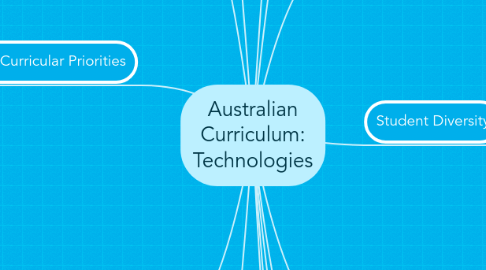
1. Digital Technologies
1.1. Digital systems are everywhere, mobile and desktop devices and networks are transforming learning, recreational activities, home life and work. Digital systems support new ways of collaborating and communicating, and require new skills such as computational and systems thinking. Technologies are an essential problem-solving toolset in our knowledge-based society.
1.2. The Western Australian Curriculum: Digital Technologies empowers students to shape change by influencing how contemporary and emerging information systems and practices are applied to meet current and future needs. A deep knowledge and understanding of information systems enables students to be creative and discerning decision-makers when they select, use and manage data, information, processes and digital systems to meet needs and shape preferred futures.
1.3. Digital Technologies provides students with practical opportunities to use design thinking and to be innovative developers of digital solutions and knowledge. Digital Technologies enables students to become innovative creators of digital solutions, effective users of digital systems and critical consumers of information conveyed by digital systems.
2. Knowledge and Understandings
2.1. Content Descriptors/Elaborations;
2.2. Using computational thinking and the key concepts of abstraction; data collection, representation and interpretation; specification, algorithms and implementation to create digital solutions.
2.3. Confidently uses digital systems to efficiently and effectively transform data into information and to creatively communicate ideas in a range of settings.
2.4. Applying systems thinking to monitor, analyse, predict and shape the interactions within and between information systems and understand the impact of these systems on individuals, societies, economies and environments.
3. Cross-Curricular Priorities
3.1. Aboriginal and Torres Strait Islander histories and cultures
3.1.1. Explore how Aboriginal and Torres Strait Islander Peoples' capacity for innovation is evident through the incorporation and application of a range of traditional, contemporary and emerging technologies and practices to purposefully build and/or maintain cultural, community and economic capacity. Students may apply this knowledge and understanding throughout the processes of observation, critical and creative thinking, action, experimentation and evaluation.
3.2. Asia and Australia's engagement with Asia
3.2.1. Provides diverse and authentic contexts to develop knowledge and understanding of technologies processes and production and related cultural, social and ethical issues. It enables students to recognise that interaction between human activity and the diverse environments of the Asia region continues to create the need for creative solutions and collaboration with others, including Australians, and has significance for the rest of the world.
3.3. Sustainability
3.3.1. Identifying and critiquing a problem, need or opportunity; generate ideas or concepts; and create solutions, they give prime consideration to sustainability by anticipating and balancing economic, environmental and social impacts.
4. General Capabilities
4.1. Literacy
4.2. Numeracy
4.3. Information and communication technology (ICT) capability
4.4. Critical and creative thinking
4.5. Personal and social capability
4.6. Ethical understanding
4.7. Intercultural understanding
5. Curriculum Aim/Objectives
5.1. The Western Australian Curriculum: Technologies aims to develop the knowledge, understandings and skills to ensure that, individually and collaboratively, students:
5.2. Investigate, design, plan, manage, create and evaluate solutions.
5.3. Are creative, innovative and enterprising when using traditional, contemporary and emerging technologies, and understand how technologies have developed over time.
5.4. Make informed and ethical decisions about the role, impact and use of technologies in the economy, environment and society for a sustainable future.
5.5. Engage confidently with and responsibly select and manipulate appropriate technologies − materials, data, systems, components, tools and equipment − when designing and creating solutions.
5.6. Critique, analyse and evaluate problems, needs or opportunities to identify and create solutions.
6. Design Technologies
6.1. Knowledge, understandings and skills involved in the design, development and use of technologies are influenced by, and can play a role in, enriching and transforming societies and our natural, managed and constructed environments.
6.2. The Western Australian Curriculum: Design and Technologies actively engages students in creating quality designed solutions for identified needs and opportunities across a range of technologies contexts. Students consider the economic, environmental and social impacts of technological change and how the choice and use of technologies contributes to a sustainable future. Decision-making processes are informed by ethical, legal, aesthetic and functional factors.
6.3. Through Design and Technologies students manage projects, independently and collaboratively, from conception to realisation. They apply design and systems thinking and design processes to investigate ideas, generate and refine ideas, plan, produce and evaluate designed solutions. They develop their ability to generate innovative designed products, services and environments.
7. Knowledge and Understandings
7.1. Content Descriptors/Elaborations;
7.2. Impacts of technology design on the everyday lives of the World's population.
7.3. Using a range of materials, systems, components, tools and equipment creatively, competently and safely; and managing processes.
7.4. Understanding the roles and responsibilities of people in design and technologies occupations and how they contribute to society.
8. Key Ideas
8.1. Abstraction
8.2. Creating Preferred Futures
8.3. Digital Systems
8.4. Project Management
8.5. Data Collection, Representation and Interpretation
9. Student Diversity
9.1. Students with disability
9.1.1. Adjustments to the delivery of some practical aspects of lessons will be necessary to ensure some students with physical disability can access, participate, and achieve on the same basis as their peers. This might involve students using modified tools, materials or equipment to create solutions. Teachers may also need to consider adjustments to assessment of students with disability to ensure student achievement and demonstration of learning is appropriately measured.
9.2. English as an additional language or dialect
9.2.1. These students may require additional time and support, along with teaching that explicitly addresses their language needs.
9.3. Gifted and talented students
9.3.1. Flexibility to meet the individual learning needs of gifted and talented students.
